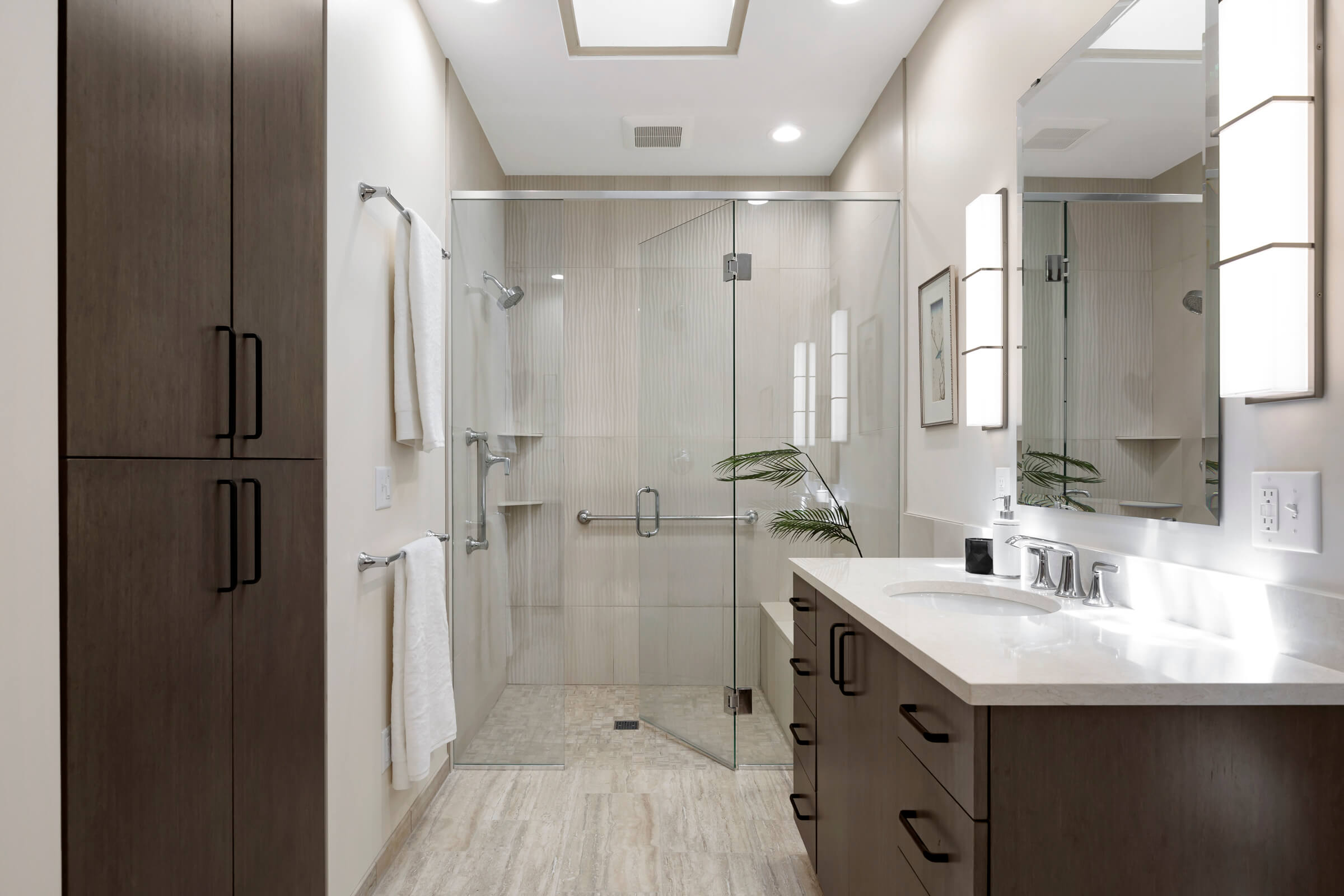We first mentioned biophilic design in our Bathroom Trends blog post earlier this year, but what is it exactly? Biophilic design utilizes natural elements, patterns and textures to create a space that reduces stress, enhances creativity, and improves our overall well-being. As our world population continues to urbanize, biophilic design is becoming increasingly popular and necessary as it reconnects us to the natural world.
What is Biophilic Design?
Biophilic design was founded back in the early 1980’s when Edward O. Wilson, an American biologist, published his hypothesis that humans have a deep-seeded, biological affection for the natural world. Since our natural habitat is now a built environment that we spend 90% of our time in, biophilic design aims to bring natural elements, both obvious and subtle, into our indoor environments to create spaces that satisfy our need to be one with nature.
Benefits of Biophilic Design
The theory of biophilia is more than just a philosophy. Biophilic design has been found to improve cognitive function and productivity, reduce stress, and aid in physical and mental well-being. A study in 2019 by the University of Denmark found that children under the age of 10 who had greater access to green spaces had 55% less risk of mental health disorders in adulthood. There have been many studies that have tied plants to productivity as well. There is a theory called the “attention restoration theory” that articulates that when we spend a lot of time intensely focused at work, we find ourselves fatigued more often. It states that spending even a few seconds taking your eyes off the screen to stare at a desk plant could help give your mind a break and therefore restore your ability to focus. Large companies like Google, Etsy and others have started implementing biophilic design into their workplaces to ensure their employees remain happy, creative and hard working.
Elements of Biophilic Design
There are many elements that enforce biophilic design, some of them direct and some of them indirect. Some direct examples are sunlight, plants, and water. These can take the form as skylights or large expansive windows to allow more natural light into your home, living walls or potted plants that are not only aesthetic, but provide greenery in your space, and water features or even the addition of a rain showerhead in your bathroom. Some indirect elements include natural materials like wood and stone, pictures of nature, and the use of natural colors and forms. Natural materials like responsibly sourced woods and recycled materials like terrazzo are becoming increasingly popular as we strive to be more sustainable and conserve nature.
Get Started
Biophilic Design will continue to increase in popularity all over the world and there are many reasons why. Integrating these natural and soothing elements throughout your home will help improve your quality of time at home. If you would like to learn more about how we can integrate Biophilic Design in your next remodel, contact us and talk with one of our talented and knowledgeable designers.

